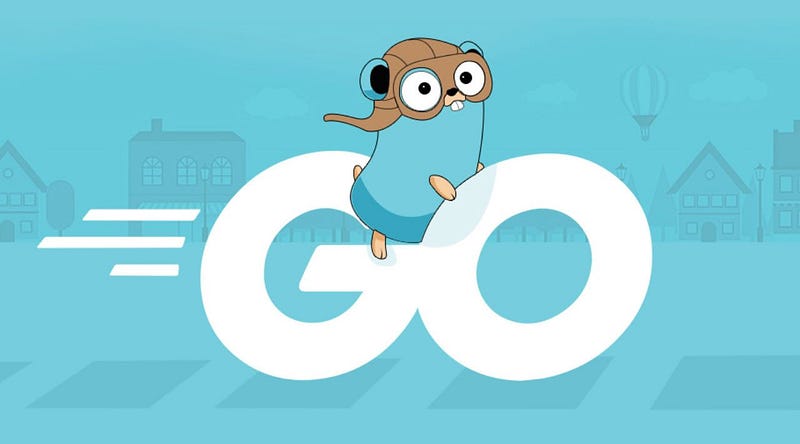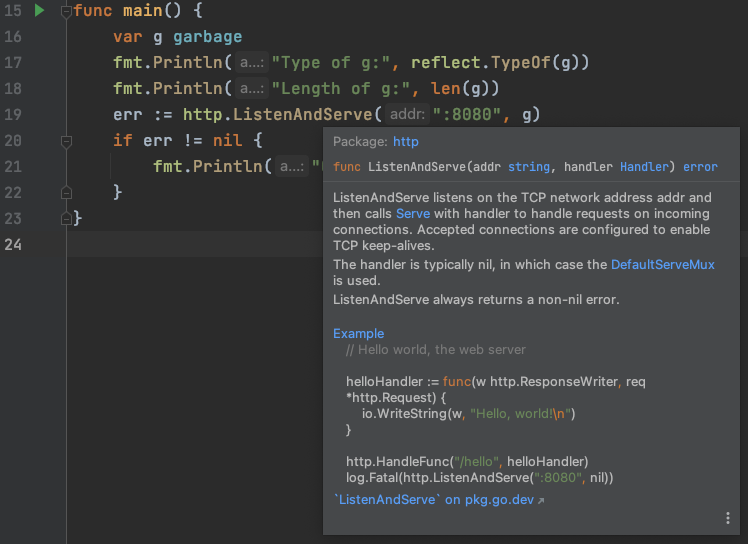Enhance Your Web Development Skills Using Go's net/http Package
Written on
Chapter 1: Introduction to Go's net/http Package
Go has rapidly become one of the most useful general-purpose programming languages, especially for web development. Its standard library is not only extensive but also modular, allowing developers to approach problem-solving logically rather than relying on monolithic library functions.
In this article, we’ll explore the "net/http" package in Go, aiming to enhance your web programming capabilities while diving into this popular language. The key topics we will cover include:
- Understanding the handler interface
- Working with requests and responses
Let's get started with some Go programming!
Section 1.1: The Handler Interface
Go offers three key features that make it a great language for beginners. Firstly, its syntax is straightforward and succinct. Secondly, Go has excellent documentation. Lastly, its source code is largely self-explanatory.
To illustrate this, let’s examine the documentation for the net/http package. We will reference this documentation throughout our tutorial.

We will start with simple examples of RESTful Get and Post requests in Go.
Since Go promotes an event-driven architecture, it has a unique approach to handlers. A handler is essentially a function that executes predefined actions in response to certain events or environmental changes. In Go, a handler is defined as an interface, as illustrated below.
The Handler interface is realized through a single method called ServeHTTP(), which accepts two parameters: ResponseWriter and a pointer to an http.Request. Since Go does not use inheritance, you can make any object implement the Handler interface simply by adding the ServeHTTP() method to it.
Let’s look at this in code. We define a custom Go type named garbage, which is also of type string. By implementing the ServeHTTP() method as required, we implicitly make garbage a type of Handler as well. This means we can pass our instance of garbage, named g, into the http.ListenAndServe() method.
We can view this example in action by first running the server and then using the command line tool curl to engage our handler.
$ go run handler.go
In another terminal, use:
$ curl localhost:8080
Now, returning to our first terminal, we should see the output confirming that g is of type main.garbage and also has access to the len() method because it's also a string.
Section 1.2: Exploring http.ListenAndServe()
To understand what happens in http.ListenAndServe(), a valuable tip from experienced software engineers is to examine the source code closely.
If you are using IntelliJ IDE on a Mac, accessing the source code may vary for you. However, the official Go source code is available on GitHub.

When inspecting the http.ListenAndServe() method, you’ll find that it takes two parameters: a string representing the port address and the handler object that activates upon receiving a connection request. The method uses the Transmission Control Protocol (TCP) as its communication standard.
The Go developers have included helpful comments within the function ListenAndServe(). Notably, if the handler is set to nil, a DefaultServeMux will be used to handle requests based on the URL.
To dive deeper, we can investigate the method server.ListenAndServe() to uncover how it manages connection requests.
As we delve into the code, we discover that each incoming connection spawns a new goroutine, which operates independently of the rest of the program. The developers also maintain code cleanliness by using the defer l.Close() statement immediately after reassignment, ensuring there are no lingering open connections.
Understanding how these components interact provides insight into structuring your own Go code effectively.
Chapter 2: Working with Requests and Responses
We will keep things straightforward.
The Go request struct has numerous fields and methods that we can utilize. To illustrate, we will define a new struct called Response that extends the http.ResponseWriter object. Additionally, we will create a method called Text() that takes an HTTP status code and a body string.
Since our Response struct extends the http.ResponseWriter, we can specify the response headers, which are key-value pairs that convey additional information about the requests and responses. In our example, we set the content type to text and call WriteHeader() with the specified status code. Finally, we use io.WriteString() to write the body into our response object.
In the main method, we start by creating a new handler using http.NewServeMux(). This handler can manage request routes and respond with the appropriate handler. We then invoke handler.HandleFunc(), which takes the route and a function that must accept a ResponseWriter and a Request.
We have three different routes defined:
- The general route "/" that matches any URL.
- The extended route "/hello" that returns "Hello world".
- A wildcard route that processes anything like "/hello/something".
After starting our server with http.ListenAndServe(), we can check for errors, as responsible Go developers do.
To see how this operates, start your server:
$ go run handlers.go
And test various routes using curl in another terminal:
$ curl localhost:8080
Not found
$ curl localhost:8080/hello
Hello world
$ curl localhost:8080/hello/Harry-Potter
Hello Harry-Potter
Congratulations! You've developed a handler that can manage multiple routes, utilize request data, and provide customized responses back to the client.
I hope you found this overview of the net/http package in Go informative. If you have any questions or enjoyed the article, feel free to leave a comment below. Thank you for reading!
This video, titled "Go Programming: 99 l Using net http package with listen and serve functions", provides an in-depth explanation of how to effectively use the net/http package, focusing on listen and serve functionalities.
In this video, "Golang HTTP connections deep dive, using 'net/http' package first, then using simple net sockets", the content delves into the intricacies of HTTP connections in Go, offering a detailed exploration of the net/http package.